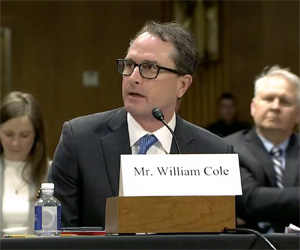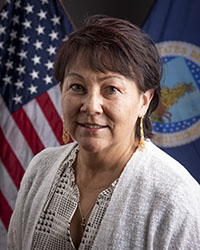Crop insurance companies and their agents have spent years fighting off cuts in Congress or at USDA. Now, they're arguing limits imposed more than a decade ago are unfairly shrinking returns for specialty crop policies, a priority sector for policymakers, and appealing for an increase in federal reimbursement.
The cap on the administrative and operating expenses insurers and their agents can be compensated for has not been raised since 2015, when USDA stopped providing inflationary increases in the limit. The Crop Insurance Professionals Association, which represents agents, says since the number of specialty crop policies has been growing by the year, the freeze in the A&O amounts to an effective cut in reimbursement for that type of business.
“If left unaddressed, I fear these cuts to specialty crop policies will greatly undermine the risk management delivery system for specialty crops and the producers who grow them,” William Cole, a Mississippi agent who chairs CIPA, said in testimony to the Senate Agriculture Committee recently.
Since overall A&O is frozen at 2015 levels, “crop insurance is doing more and more for less in terms of real dollars,” he added.

William Cole, CIPA
The total liability of insurance policies sold for fruits and vegetables and other specialty crops grew to nearly $15 billion in 2022, up from an average of just under $11 billion from 2016 to 2019. However, the A&O allowance for specialty crops has dropped from a 2016-19 average of $134 million to $99.4 million last year, according to CIPA.
Meanwhile, the total A&O paid to the industry has grown from an average of about $1.5 billion from 2016-19 to $2.2 billion last year, according to USDA.
Agent returns are generally based on the value of the policies, which are in turn tied to fluctuations in commodity prices. The key problem for specialty crops, according to the industry, is while prices for major crops such as corn and soybeans have been soaring in recent years, prices for specialty crops have not, so the A&O cap has had a disproportionate effect on that sector.
The reason has its roots in the 2008 farm bill.
A budget-cutting provision in that bill required USDA to slash the amount of money going to the insurance industry by renegotiating the Standard Reinsurance Agreement that determines how the industry is compensated. Companies receive the A&O funding, which they share with agents in the form of commissions, and the firms also keep underwriting gains, a percentage of the premiums left over after indemnities are paid.
During the Obama administration, USDA reached a deal with the industry in 2011 that included maximum and minimum limits on total A&O. USDA indexed the cap for inflation through 2015, but hasn't done so since. In 2015, the administration reached a budget deal with the GOP Congress to cut industry compensation by even further reducing the insurance companies' rate of return, but the $3 billion cut was rescinded by Congress a few weeks later.
The industry has gotten the attention of Congress with its complaints about reimbursement; the fiscal 2023 omnibus spending bill provided $25 million to supplement A&O payments for specialty crop policies in 2021. USDA announced shortly before the Senate Ag hearing that the funding was being made available to eligible companies.
 RMA Administrator Marcia Bunger
RMA Administrator Marcia Bunger
The joint explanatory statement that accompanied the FY23 spending bill urged USDA to index the A&O cap for inflation. The statement said RMA has the “authority to provide for an inflation adjustment to all administrative and operating expense reimbursements without a renegotiation of the SRA in a manner similar to the inflation adjustment from 2011 through 2015. Further, the agreement encourages RMA to provide for an inflation adjustment to all A&O in order to provide equitable relief with respect to specialty crop policies.”
However, USDA has so far declined to increase the overall A&O cap.
In an April letter to CIPA's Cole that USDA provided to Agri-Pulse, Risk Management Agency Administrator Marcia Bunger insisted that the cap cannot be altered unless the 2011 SRA is renegotiated.
By law, any renegotiation must “be done in a manner that, to the maximum extent practicable, is budget neutral with regard to A&O payments and underwriting gains,” Bunger wrote. “At this time, RMA does not have plans to renegotiate the SRA, but any future renegotiation would focus on ensuring the program is administered in an equitable manner while maintaining budget neutrality, as required by law.”
Bunger was unavailable for an interview on the issue, according to a spokesman.
But the crop insurance industry argues that USDA does, in fact, have the authority to resume indexing the cap for inflation.
Jason Meador, head of RCIS, Zurich North America, one of 14 approved crop insurance providers, said in his testimony to the Senate Ag Committee that RMA’s objections to the industry’s request “are inconsistent with the SRA and statutory authority granted by Congress.” Meador was testifying on behalf of the Crop Insurance and Reinsurance Bureau.
Don’t miss a beat! It’s easy to sign up for a FREE month of Agri-Pulse news! For the latest on what’s happening in Washington, D.C. and around the country in agriculture, just click here.
The top Republican on the Senate Agriculture Appropriations Subcommittee, which controls USDA’s budget, supports the industry’s position.
“USDA has the authority to provide inflationary adjustments. They haven't done that since 2015,” said Sen. John Hoeven, R-N.D. “They did it before. that authority did not magically disappear.”
The ultimate fix, according to CIPA, is a legislated floor under A&O for specialty crops.
The Western Growers Association, which represents fruit, vegetable and tree nut producers in California, Arizona and other states, told Agri-Pulse it is aware of the A&O concerns of agents.
“In the past we have supported the idea of providing more reimbursement to crop insurance agents who sell a high percentage of specialty crop policies. We believe that the work the agent performs on specialty crop plans of insurance is often higher than when an agent sells a policy of insurance to row crop growers, which would justify additional compensation,” Dennis Nuxoll, director of government relations and federal policy for Western Growers, said in a statement to Agri-Pulse.
Joe Glauber, a former chief economist for USDA who was at the department when the 2011 SRA was negotiated, said that crop insurance for specialty crops is generally less lucrative to the industry than policies on row crops, especially corn and soybeans in the Midwest.
“Specialty crop producers don't typically insure at high coverage levels, just because the premium costs are pretty high,” he said. “And because of that there's just not the premium volume necessarily generated by specialty crops compared to some of the other crops.”
Western Growers is part of the Specialty Crop Farm Bill Alliance, which is asking Congress to take several steps to make crop insurance policies still more attractive to the sector. Senate Agriculture Committee Chairwoman Debbie Stabenow, D-Mich., has repeatedly said she wants to expand the availability of insurance options for specialty crops.
For more news, go to Agri-Pulse.com.


